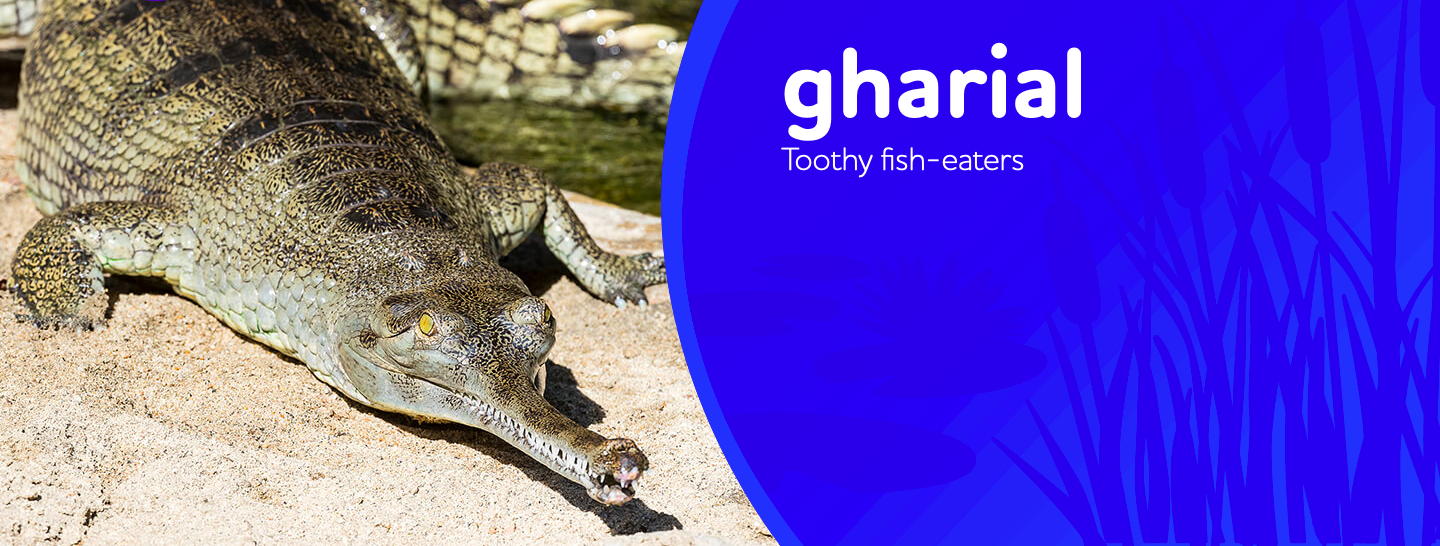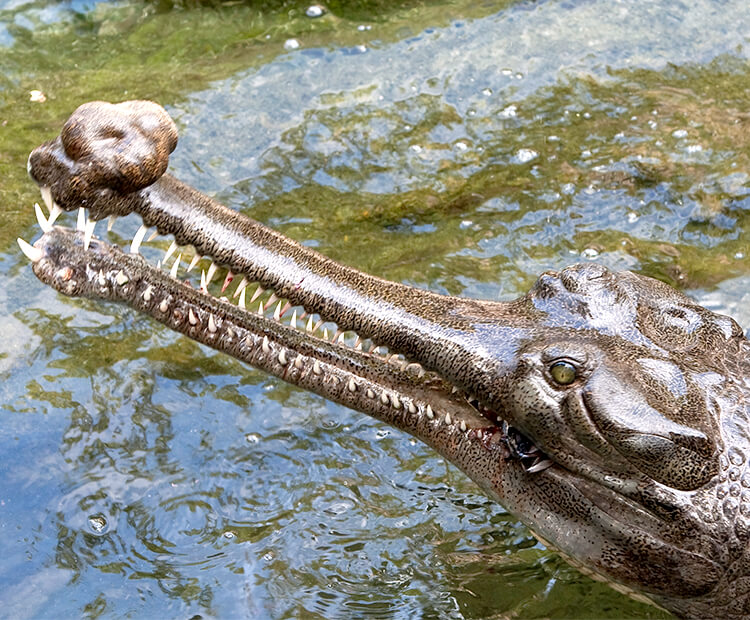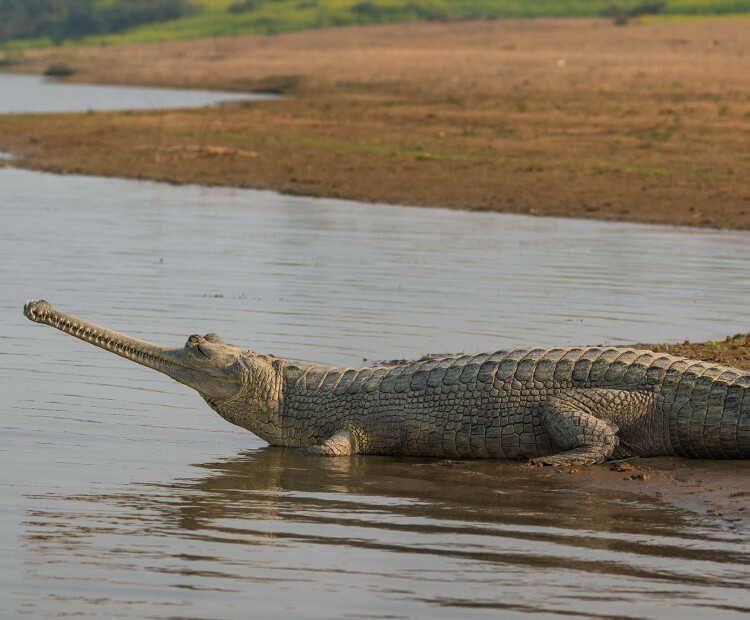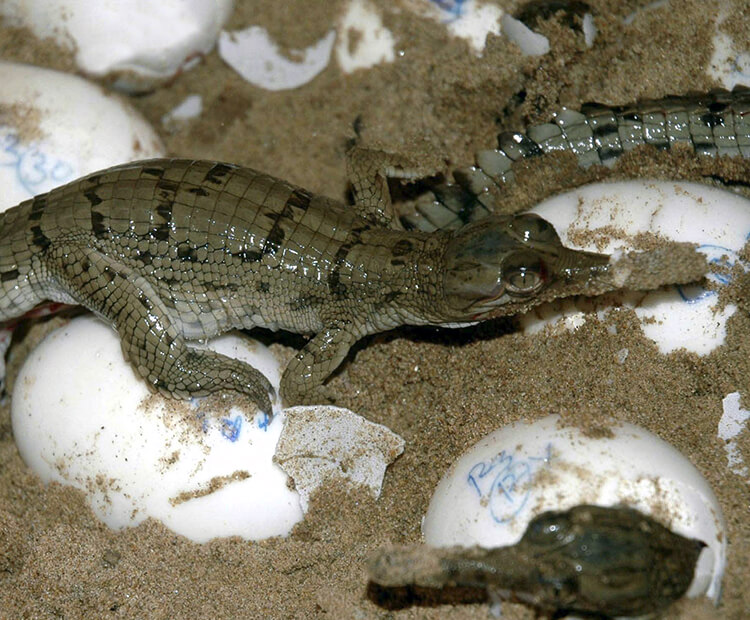





 Gharials can be found in watery locations like rivers and wetlands. |
 Gharials are "sit-and-wait" predators, with a long, slender snout that holds about 100 sharp, interlocking teeth. They hunt near the river bottom, holding still or moving very slowly, and snapping up fish that come too close. |

|
Gharials are related to crocodiles and alligators-a group of reptiles called crocodilians. Gharials are one of the largest crocodilians. Some weigh more than a Harley-Davidson motorcycle! Gharials are excellent swimmers, but their legs are too weak to support their enormous body on land. Instead of walking the way other crocodilians do, gharials slide on their bellies.
Female gharials lay eggs at night. First, they dig a hole in the sand, near water. They lay their eggs in the hole and cover them with sand. A gharial mom stays near her nest until her eggs hatch, to keep them safe from predators like pigs, mongooses, and large lizards.
When a male gharial is about 10 years old, a bump of cartilage starts to grow at the tip of his snout. Eventually, the bump becomes a big knob. An adult male gharial can make a buzzing noise through its knob. Gharials are the only crocodilians with these knobs, and they grow only on males.